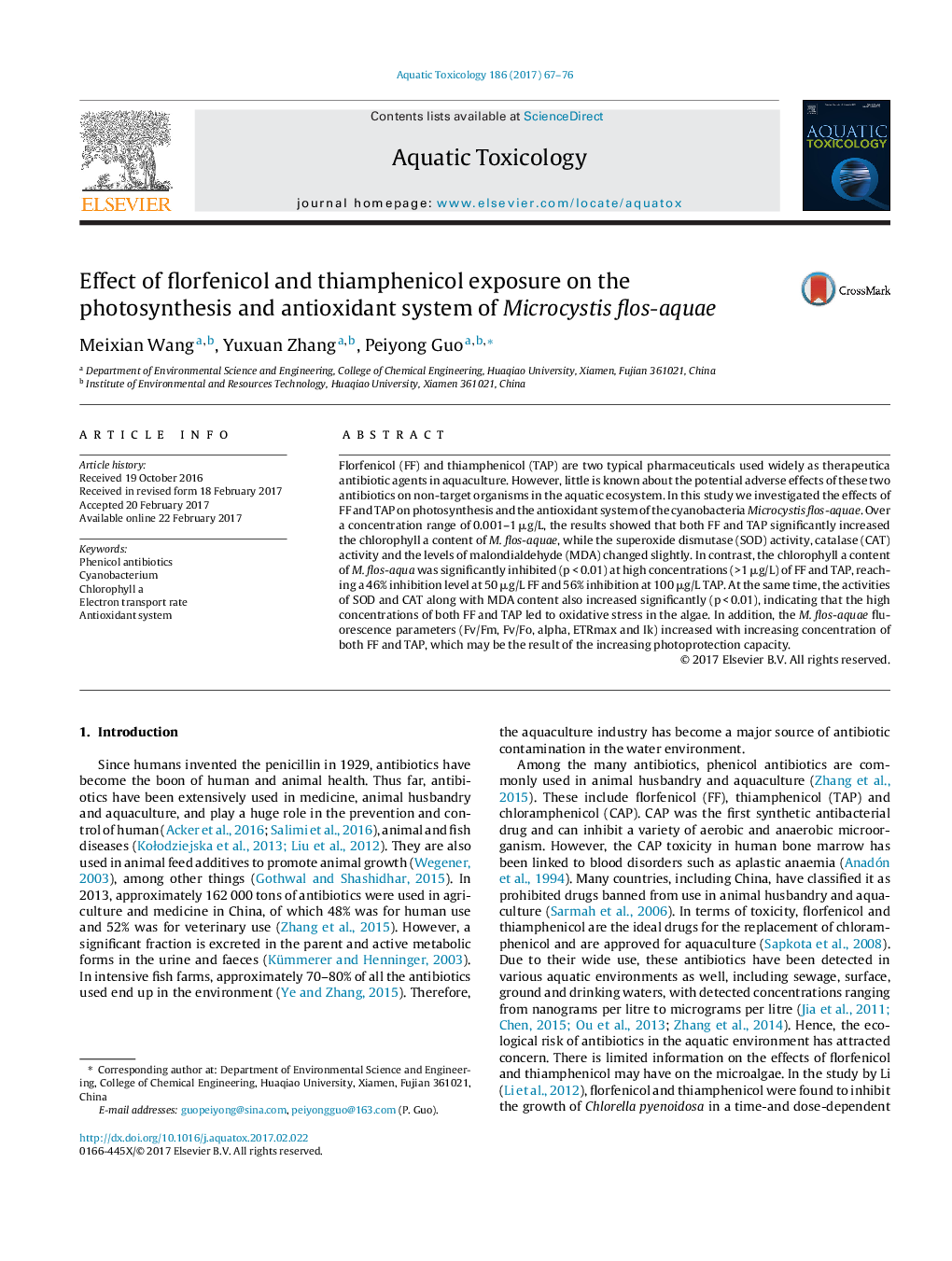| کد مقاله | کد نشریه | سال انتشار | مقاله انگلیسی | نسخه تمام متن |
|---|---|---|---|---|
| 5764315 | 1625919 | 2017 | 10 صفحه PDF | دانلود رایگان |

- We studied the effect of florfenicol (FF) and thiamphenicol (TAP) on photosynthesis and the antioxidant system of Microcystis flos-aquae.
- We measured the changes in photosynthetic activity and the antioxidant system in algae.
- Low concentrations of both FF and TAP increased the chlorophyll a content significantly, while, the antioxidant system changed slightly.
- High concentrations of both FF and TAP inhibited the chlorophyll a content significantly and caused oxidative stress.
Florfenicol (FF) and thiamphenicol (TAP) are two typical pharmaceuticals used widely as therapeutica antibiotic agents in aquaculture. However, little is known about the potential adverse effects of these two antibiotics on non-target organisms in the aquatic ecosystem. In this study we investigated the effects of FF and TAP on photosynthesis and the antioxidant system of the cyanobacteria Microcystis flos-aquae. Over a concentration range of 0.001-1 μg/L, the results showed that both FF and TAP significantly increased the chlorophyll a content of M. flos-aquae, while the superoxide dismutase (SOD) activity, catalase (CAT) activity and the levels of malondialdehyde (MDA) changed slightly. In contrast, the chlorophyll a content of M. flos-aqua was significantly inhibited (p < 0.01) at high concentrations (>1 μg/L) of FF and TAP, reaching a 46% inhibition level at 50 μg/L FF and 56% inhibition at 100 μg/L TAP. At the same time, the activities of SOD and CAT along with MDA content also increased significantly (p < 0.01), indicating that the high concentrations of both FF and TAP led to oxidative stress in the algae. In addition, the M. flos-aquae fluorescence parameters (Fv/Fm, Fv/Fo, alpha, ETRmax and Ik) increased with increasing concentration of both FF and TAP, which may be the result of the increasing photoprotection capacity.
Journal: Aquatic Toxicology - Volume 186, May 2017, Pages 67-76